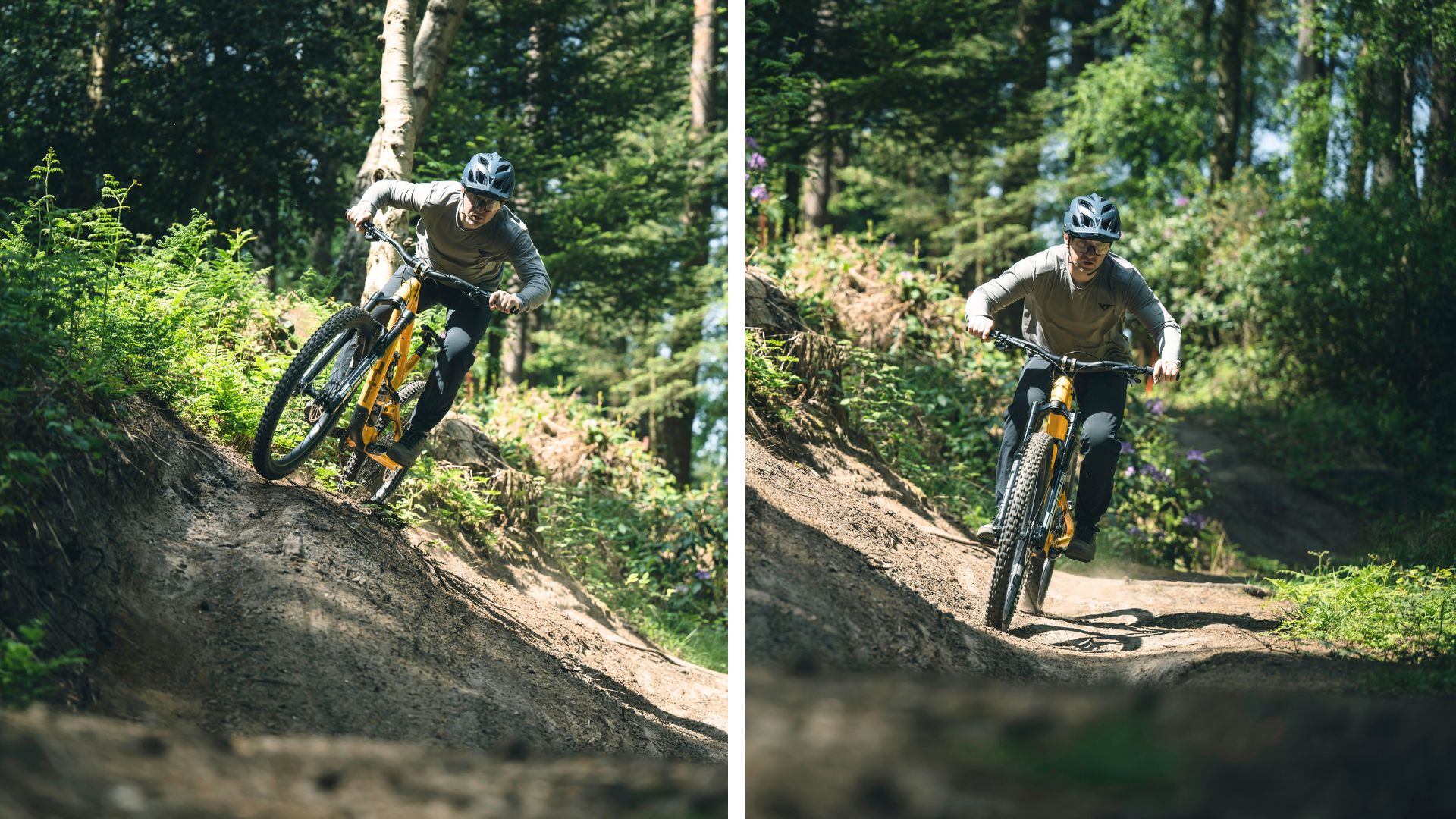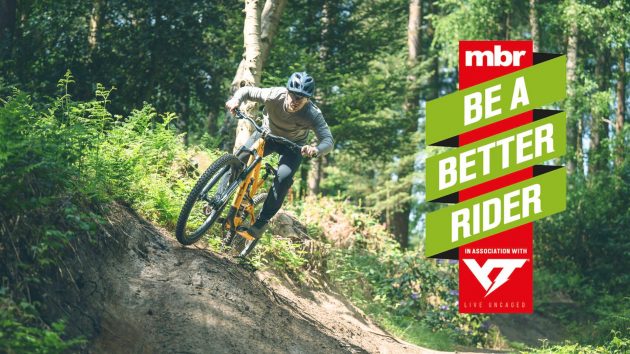How to plan ahead on the trails and pick the savviest lines. Ride smarter.
One of the most satisfying things about riding mountain bikes is knowing that you’re constantly making progress. There’s no better feeling when you’re out for a ride than conquering a new trail, or mastering a technical challenge that’s gotten the better of you for ages. Having these measurable goals allows you to keep track of your progress and gives you the confidence to try new challenges.
Every so often, though, you might find you hit a plateau and don’t seem to be improving any more. This article is about identifying what’s happening when you hit a bit of a wall, and how to make a plan to break through it and move beyond your self-imposed limits. By identifying some of the techniques or reactions that are holding you back, and making a deliberate plan to help you overcome them, you can start making progress again.
Plan of attack
Riding reactively has its uses: you just swing your leg over your bike and don’t have to think about it. You can just switch off from the pressures and decisions of everyday life and escape out into your own wee world in the hills for a few hours. Unfortunately though, if you spend every ride doing this your progress might stagnate.

In order to stop this from happening it’s always good to have a technical goal in mind every ride. That might be to stay close to the bike in order to open up more reaction time on steep trails. If it’s a wet day, it might be to brake in places where it’s safe, so you can let go and get more grip over the slippy bits. Be clear about what your particular goal is every ride and you’ll continue to make progress even while switching off and escaping.
Going around vs hopping over
Riding around certain larger features might be easier, but if you know that it can be done a different way then why not take the plunge and give it a go? A more direct route will allow you to carry speed better, it will often give you more time to react, and it will definitely give you the satisfaction of facing a challenge head on and overcoming it. Simply put, make a plan about how you’re going to face the obstacle and put it into action when you get there.
React: Riding around obstacles like this chunky tree stump might seem like an easier option at first, but often taking the long way round will mean more turns, fighting another adverse camber, and going into the next corner with limited time. Riding with so much going on might feel as though it’s fast because you have no time to think, but it’s busy, risky, and doesn’t give you any room for progression or making mistakes.
Plan: Committing to riding straight over a feature like this will take a bit of patience and practice. It’s not the kind of thing that you’ll do with confidence straight away, so have a plan and stick to it. Get low on the way in to open up more room to move. As you approach the last bit of smooth ground, straighten your legs and drive the bike heavy into the trail. This will create good grip and mean that as your wheels leave the ground you feel balanced and on target. Aim to land after the obstacle on the next piece of smooth ground and you will have linked the two grippy bits together and have cleared the roots.
Mainline vs getting creative
The mainline exists for a reason. It’s where the majority of people ride, it’s the most straightforward, and it’s probably the most obvious. As you progress as a rider though, you can start to use your ability, experience and judgement to open up more creative solutions.

A tight, twisty turn that you have to wiggle through might interrupt the flow of the trail. Keep your eyes open, though, and there might be a way of opening up the exit and carrying more momentum out the other side.
React: There’s nothing wrong with the mainline here other than it leads you into a tight, twisty gap that feels like you are threading a needle at speed. If you’ve never stopped to look at a section like this, or if you didn’t know any better, then you’d never even notice that there are other options available to you.
Plan: By taking a straighter line into the pinch, you can open up the exit and not have to brake at all for the narrow bit. Doing this will require you to be confident with your bunny hops and linking your grip points together, but use your judgement and look at the line on foot first and you can commit to driving in the right places and open up the trail.
Don’t always take the main line

The main line is where the majority of people ride, and it’s often the most obvious and straightforward. As you progress as a rider though, you can start to use your ability, experience and judgement to open up more creative solutions.
The main line here looks easier from the top because it’s smooth and wide, but check it out from below and you’ll see that there are actually two large steps, where you will have to get off the brakes, then a right turn before the main left with a loose surface that will have reduced grip while braking. The middle line is steeper and narrower but it takes a more direct approach, gives you a better line into the left turn and your bike will be more stable on the approach.
Off the back vs staying neutral
Riding a steep trail reactively will feel great right up until something goes wrong. Typically as soon as you slip on that first root, your head will fall off and it will start to get worse and worse until you’re just surviving. This happens because as you start to move away from the danger, you limit the amount of movement available to neutralise the trail. Less room to move means that even the slightest slip or slide from your wheels feels massive. As long as you’re aware of this you can do something about it.
React: As soon as the trail gets lively you might be moving backwards on your bike without even knowing it. You will still be able to ride like this, but it will feel like you have limited control and no time to react. The more your bike slides, the further off the back you go till you’re just struggling and blaming the tyres/ conditions/hangover… etc.
Plan: Keep your head over the stem and get closer to your bike by bending your knees and elbows. Staying low will mean that as your bike continues to move on the trail, you will have the range of motion to be able to handle it. This in turn will keep your body weight neutral and will feel like you have more time to react. This will ultimately lead to more confidence and control. As soon as you start slipping and sliding again, have a quick body position assessment and come back to a low, neutral position as soon as you can.
Mainline vs highline
As trails start to get steeper, taking a wider line in becomes more important. It’s often easy to miss, and if you’re just following the mainline you’d never even notice the other options that are available to you. Go in with a plan, though, and you’ll start to notice that there are options available to you the whole way down.

React: Sticking to the mainline on a turn like this will mean that you start to accelerate as soon as you tip it in. By the time you get further round the corner you will be going too fast and feel like the corner is getting tighter and like you’re running out of room. The only way to stay in control if you’re riding like this is to keep slowing down for the exit
Plan: Take a wider line in and you’ll be able to do a lot of the corner up high before you’ve even started to accelerate. This means that as you drop in and pick up speed you’ll be facing the right way to carry all that momentum out of the turn. Being patient on the way in will open up more control in the risky ‘tight’ bit, and mean you can carry speed with confidence on the way out.
Old body position vs consciously low
Being aware of your body position when descending is a huge advantage. Typically you can go low if you think about it, but it’s the times where you think there’s nothing to worry about that will often catch you off-guard. Lower your upper body a few centimetres, though, and you’ll open up more wiggle-room for that unexpected movement.
React: Riding in a regular stance is fine until you hit something that you didn’t expect. As soon as a slide root, or loose rock catches you off-guard, you’ll use up your available movement and be taken off-balance with no warning.
Plan: Get into the habit of checking your body position before and after every section of trail. That way you’ll keep reminding yourself to get lower, meaning that when those unexpected movements happen you can stay composed, keep your balance, and continue with confidence.
Pedal out vs being patient
How fast you’re going and how fast it feels like you’re going are two completely different things. We would call this a rider’s perceived exertion, and it’s often very different to how fast they are actually going. A good example of this would be pedalling hard out of corners. This will work for the first two or three turns while your legs are fresh and your heart rate is low, but keep it up on a long trail and you’ll be chopping away at the pedals with no power and making mistake after mistake as your heart rate soars. Having a longer-term plan might help with this.
React: We all react to what our senses are telling us. What other way do we have to experience the world? When it lets us down, though, is when we are putting loads of effort in and thinking that it’s getting us places. Initially it will work well, but as your heart rate rises, your body will be working harder for the same effort. The eventual result is that your body is working at its max, but your actual effort has dropped significantly.
Plan: Instead of going hard everywhere and getting slower the longer a track goes on, choose the places where your effort will make the biggest difference and save your energy everywhere else. You should be using your technique to drive your weight against a turn and build speed for the exit, only pedalling when you’re out in the open and able to make a difference.
Making progress
The next time you ride, set yourself some goals. This is often easier on familiar terrain because you’ve ridden it before and know what to expect. You can spend a little more time pre-planning on your way into sections and executing your plan. You may even catch yourself missing others along the way. As long as you’re working to a plan, though, you’ll start to see opportunities everywhere.
Looking for a new bike to elevate your skill level? Our guide to the best mountain bikes has options for all riding preferences and budgets. Or if it’s upgrades you’re after, having the best tyres for your riding conditions or a great set of MTB brakes can make a huge difference.




